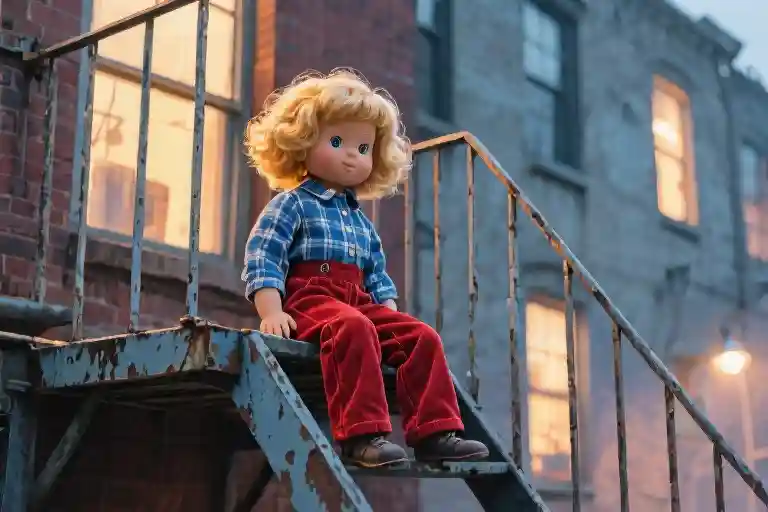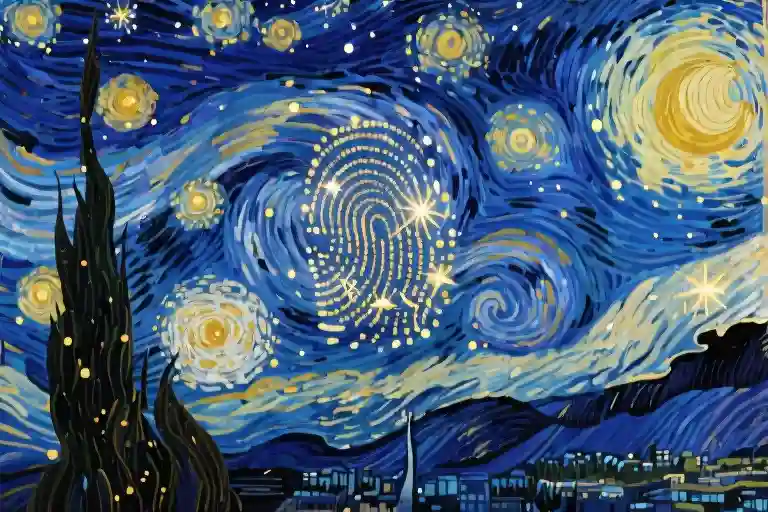Grief is not the absence of love but its echo — a shadow cast when the sugar-cube world dissolves into shards. My brother’s laughter once lit rooms; now, it lingers as a language only the dead still speak. That third day of Eid in 2021, the phone rang before dawn. A voice said two words that split my life into before and after: “He’s gone.”
I remember how the morning light looked wrong that day — too bright, too ordinary. The sugar-cube world we’d built together was cracking at the edges, dissolving into tea I couldn’t bring myself to drink. His favorite mug sat empty on the counter, still bearing the ghost of his fingerprints.
They say sudden loss leaves no time for goodbyes, but that’s not quite true. The goodbye happens in a thousand moments afterward — when you reach for your phone to share a joke before remembering, when you catch his scent on an old sweater, when the space beside you on the couch stays empty. Grief doesn’t erase love; it speaks love’s language in a different dialect.
In those first weeks, I moved through life like a sleepwalker. The numbness felt like mercy until it didn’t. Then came the memories — not gentle visitors but storms crashing through without warning. His crinkled-eye smile during our last video call. The way he’d hum off-key while making coffee. The unfinished text message still saved in my drafts.
What no one tells you about profound loss is how physical it feels. Love migrates to the marrow, becomes a pulse beneath the skin. Sometimes even now, I’ll turn a corner expecting to see him, not because I’ve forgotten, but because some part of me refuses to stop looking. That’s the mutiny of grief — love’s stubborn insistence on enduring beyond the boundaries of flesh and time.
Yet here’s the paradox no one mentions either: This ache that feels like dying? It’s proof you’re fully alive. The depth of your sorrow mirrors the height of your love. They’re not opposites but companions, walking the same path with different gaits. Vulnerability isn’t weakness — it’s the price and privilege of caring deeply in a world where nothing lasts.
The sugar-cube world shattered, yes. But here’s what I’ve learned in gathering the pieces: Even broken things can hold sweetness. Even echoes carry the shape of the original voice. Even now, when memory’s tempest comes, I don’t run from it. I let it wash over me, salty and sharp, because the alternative — forgetting, moving on as if love could ever be past tense — would be the real loss.
When the World Split in Two
The phone rang at 3:47 AM—that precise hour when night feels heaviest. I remember fumbling for the receiver, my fingers brushing against the cold screen where my brother’s goofy contact photo still grinned at me. The voice on the other end spoke words that made the sugar-cube world I’d known shatter mid-sip, leaving bitter granules between my teeth.
For weeks afterward, I moved through life like a ghost haunting its own body. His laughter—the kind that used to make grocery store clerks smile—now existed only in recordings I couldn’t bear to play. Our last text thread stayed pinned at the top of my messages: a half-typed joke about his terrible cooking that I’d never finished sending. The scent of his cologne clung to an unwashed hoodie in my closet, ambushing me when I reached for sweaters on chilly mornings.
Grief didn’t arrive politely. It kicked down the door wearing his favorite basketball jersey, bringing hurricane-force memories:
- The way he’d drum his fingers against steering wheels during red lights
- His habit of stealing fries off my plate with exaggerated innocence
- That one crooked incisor visible only when he laughed extra hard
Numbness became my survival mode. I’d stare at my coffee mug, watching steam curl into shapes that almost resembled his profile. Automatic motions carried me through days—shower, work emails, nodding at neighbors—while inside, I was cataloging every ordinary moment he’d miss: summer fireflies, new Marvel movies, the cinnamon rolls our mom only baked at Christmas.
What no one prepares you for is how physical loss feels. My hands kept reaching for phone to share dumb memes before remembering. My ears strained for his signature knock (shave-and-a-haircut, always). Even my muscles remembered the weight of leaning against him during movie nights, now left unbalanced.
Yet in those fractured moments, I began noticing something unexpected—the love didn’t vanish when he did. It simply changed form, like light shifting through a prism. His absence wasn’t empty space; it was love reshaped, pressing against the edges of every ordinary thing he’d once touched. And that realization, more than any condolence card or casserole, became the fragile bridge between my before and after.
Grief as Love’s Rebellion
The human body has an uncanny ability to remember love long after the source is gone. It’s in the way your hands still reach for their favorite coffee mug months after they’ve passed. It’s how your ears catch fragments of their laughter in crowded rooms. This isn’t phantom pain – it’s love’s stubborn persistence, what psychologists call ‘continuing bonds.’
My brother’s presence lingers in my marrow like calcium – essential, invisible, strengthening. Sometimes when I’m chopping onions (he loved cooking), my fingers automatically adopt his precise julienne technique. Other times, I catch myself humming that ridiculous jingle he made up about our cat. These aren’t just memories; they’re cellular imprints, proof that love migrates but never evaporates.
Vulnerability as body armor sounds paradoxical until you’ve grieved. That raw openness created by loss? It’s not weakness – it’s the exposed nerve ending of profound connection. Like trees that grow stronger at their broken places, we develop emotional calluses that paradoxically make us more sensitive. The Japanese art of kintsugi comes to mind – how broken pottery gets repaired with gold, becoming more valuable for having been shattered.
Modern grief theory confirms what poets always knew: the relationship continues, just changes form. Dr. Dennis Klass’s work on ‘continuing bonds’ shows how the deceased remain psychological companions. We don’t ‘get over’ them; we learn to interact with their absence differently. My brother still influences my decisions – I’ll pause mid-argument wondering ‘What would he say?’ His values still shape my politics, his humor still tints my worldview.
This ongoing relationship manifests physically too. Neuroscientists found grief activates the same brain regions as physical pain. Of course it hurts – love built neural pathways that now fire into emptiness. But those pathways themselves are love’s monuments. Every pang whispers: ‘This mattered.’
Some days the rebellion feels violent – when his birthday notification pops up or I instinctively save an article he’d enjoy. Other days it’s gentle: finding his doodles in old books or catching his profile in my mirror. The forms vary; the truth remains – what we grieve proves what we cherished. As C.S. Lewis wrote after losing his wife: ‘The pain now is part of the happiness then.’
Practical ways to honor this continuing bond:
- Create response rituals: Light a candle when you want to talk to them
- Curate sensory memories: Keep their cologne or favorite playlist
- Develop new traditions: Cook their signature dish on difficult dates
- Write postcards to the past: Share updates they’d appreciate
The rebellion isn’t against death (that war’s unwinnable), but against oblivion. By letting love linger in our bones, we grant it victory over erasure. My brother’s gone, yet still present – in my stubborn hope, in my quick forgiveness, in the way I can’t walk past a stray cat without stopping. The body remembers what the mind struggles to accept: love outlasts its container.
Finding Sweetness in the Shards
Creating a Memory Box
In the months after my brother’s passing, I found myself clinging to physical remnants of his existence—a half-used bottle of cologne, a coffee-stained novel with his margin notes, the concert ticket stub from our last outing together. These fragments felt like messages in a bottle, washed ashore from a ship that had sailed beyond the horizon. That’s when I started building what grief counselors call a “memory box”—not a shrine to the past, but a living archive of love’s echoes.
How to curate your memory box:
- Start small with 3-5 items that engage different senses (a scarf that smells like them, a playlist you shared, their favorite tea blend)
- Include imperfect mementos—the chipped mug they always used carries more truth than formal portraits
- Add evolving elements like letters you write to them annually, documenting how your relationship continues changing
- Place it somewhere accessible—under the bed keepsakes become relics; on a shelf they remain conversational companions
When monsoons of grief hit unexpectedly, opening this box feels like holding an umbrella made of shared history. The items whisper: You didn’t imagine this love. Here’s the proof.
The Ritual of Falling Apart
Western culture treats grief like an inconvenient software glitch—something to patch quickly before returning to productivity. But in my darkest days, I discovered an unexpected liberation in scheduled collapse. Every Sunday at 4pm (precisely when we used to video call), I’d:
- Play our childhood anthem (“Sweet Child O’ Mine,” horribly off-key)
- Spread his photos across the floor like tarot cards
- Let the tsunami hit without resistance
This structured vulnerability created containment for chaos. Like monsoon channels directing rainwater, these rituals gave my sorrow pathways instead of letting it flood everything. Psychologists call this “pendulation”—swinging between pain and respite prevents emotional freezing.
Try this: Designate a 20-minute weekly “storm window” where you:
- Trigger a memory (watch their birthday video, cook their signature dish)
- Feel everything without judgment
- Conclude with a grounding ritual (light a candle, recite a mantra about love’s endurance)
What the Day of the Dead Taught Me
During my first Dia de los Muertos in Oaxaca, I witnessed grandmothers laughing through tears as they arranged marigolds on graves. Children nibbled sugar skulls inscribed with their abuelo’s name. The entire cemetery buzzed with life—not in spite of death, but through it.
This vibrant tradition holds three radical lessons for grievers:
- Continued conversation—Ofrendas (altars) include the deceased’s favorite cigarettes or gossip magazines, sustaining daily dialogue
- Communal remembrance—Unlike isolating Western funerals, the whole village celebrates ancestors together
- Sweetness alongside sorrow—Pan de muerto (bread of the dead) is deliberately sugary, embodying love’s lasting pleasure
You needn’t adopt Mexican customs to embrace this philosophy. Try:
- Setting an extra place at holiday meals
- Writing their name in the sand during beach trips
- Keeping their coffee order in your wallet like a library card for memories
The Alchemy of Absence
Grief never truly shrinks—but life expands around it. Like kintsugi pottery where gold repairs cracks, our broken edges become part of the design. Those sugar-cube shards? I’ve learned to stir them into tea, bitter and sweet swirling together. Some mornings the taste still surprises me. Most days now, it simply reminds: what was shattered still sweetens.
Your turn: Where might love’s echoes live in your life? Perhaps in:
- The way your toddler’s laugh mimics their uncle’s cadence
- Your sudden craving for their peanut butter sandwiches when stressed
- That inexplicable warmth when their favorite song plays randomly
These aren’t ghosts. They’re love, stubbornly insisting on its seat at the table.
Where Love Resides Now
The sugar shards still steep into sweet tea if you let them. That’s the final lesson grief taught me—not about absence, but about alchemy. My brother’s favorite mug sits on my shelf, its chipped rim holding neither coffee nor memory, yet somehow containing both. This is where love lives now: in the quiet transformations.
The Alchemy of Memory
Grief never truly leaves. Like sugar dissolved in tea, it changes form but remains present. Those sudden moments when a song or scent ambushes you? That’s love stirring in its new language. Psychologists call it continuing bonds—the way relationships evolve after loss. My version looks like:
- Keeping his baseball cap on the coat rack
- Laughing at inside jokes no one else understands
- Whispering “I miss you” to rainy windows
These aren’t relics of sorrow. They’re proof of love’s migration from his hands to my bones.
The Privilege of Hurting
There’s an unexpected honor in this pain. The crushing weight of grief is the tax we pay for extraordinary love. As writer Anne Lamott observed, “You will lose someone you can’t live without, and your heart will be badly broken, and the bad news is that you never completely get over the loss… but this is also the good news.”
This dual truth lives in:
- The way tears taste like salt and gratitude
- How old photos first stab, then soothe
- Why anniversaries ache with bittersweetness
Your grief isn’t a flaw—it’s love’s stubborn shadow.
A Question to Carry Forward
Before you leave this page, ask yourself: Where does your love reside now? Maybe it’s:
- In the recipe cards with your mother’s handwriting
- The childhood treehouse where your sister’s voice still echoes
- The hospital bracelet you can’t bring yourself to discard
There are no wrong answers, only honest ones. And if today’s answer is “nowhere,” that’s valid too. Grief moves at its own pace.
Resources for When the Tea Turns Bitter
Recommended Reading – The Year of Magical Thinking by Joan Didion – It’s OK That You’re Not OK by Megan Devine – Bearing the Unbearable by Joanne Cacciatore Crisis Support Lines – National Suicide Prevention Lifeline: 988 (US) – Cruse Bereavement Care: 0808 808 1677 (UK) – Lifeline Australia: 13 11 14 Remember: However your love echoes today, it counts. However you carry it forward, it matters. The sugar shards still hold sweetness—you just have to let them dissolve.





